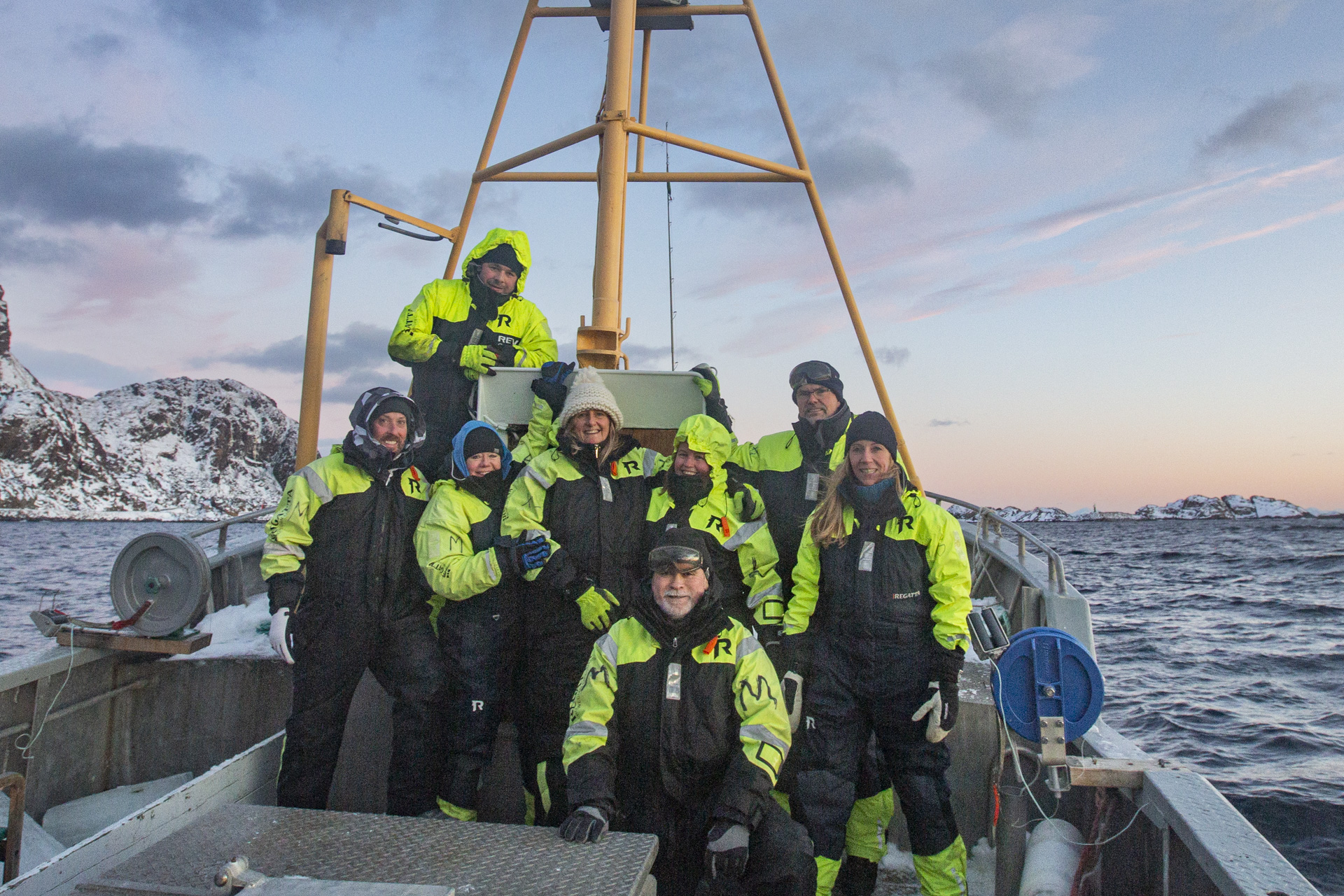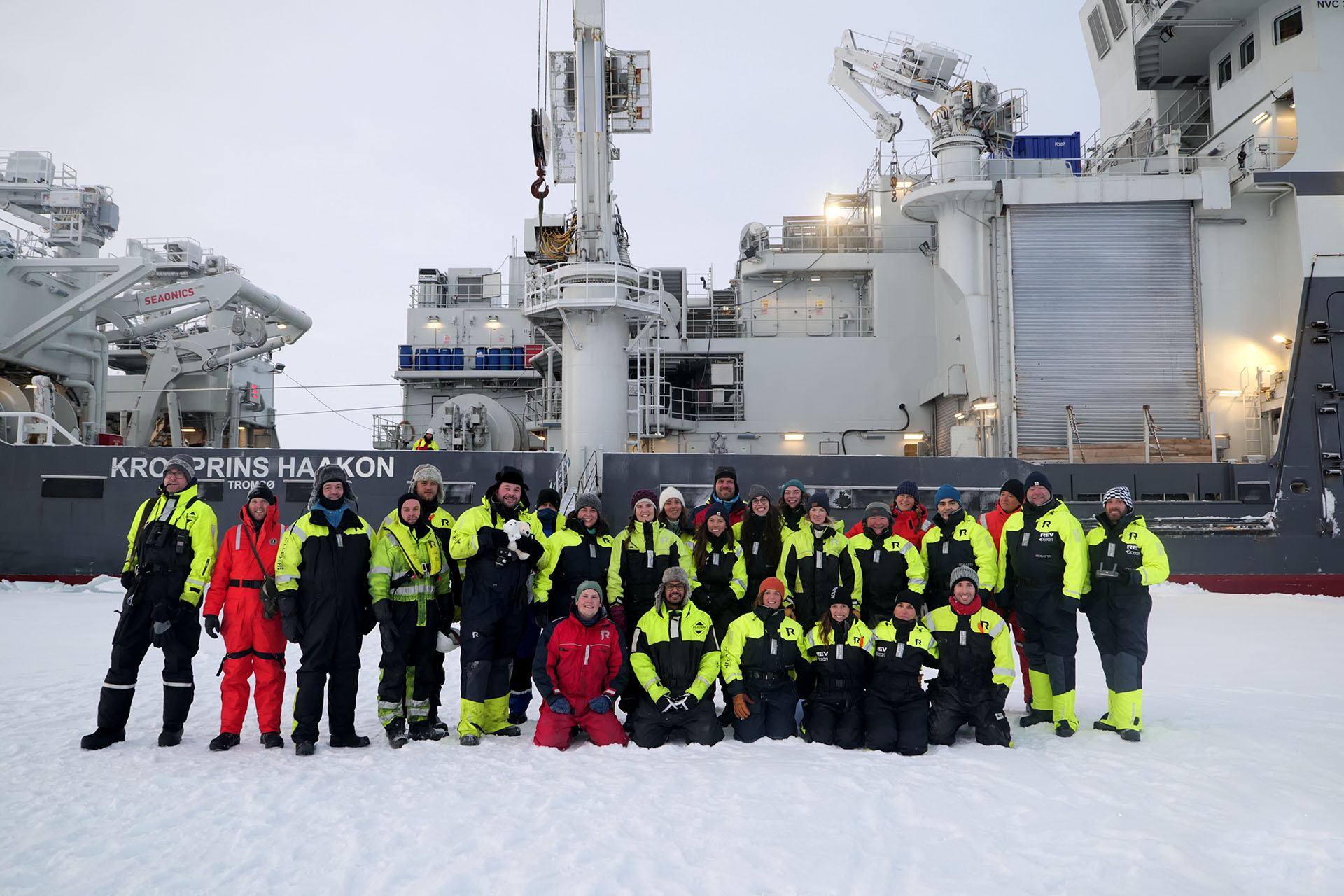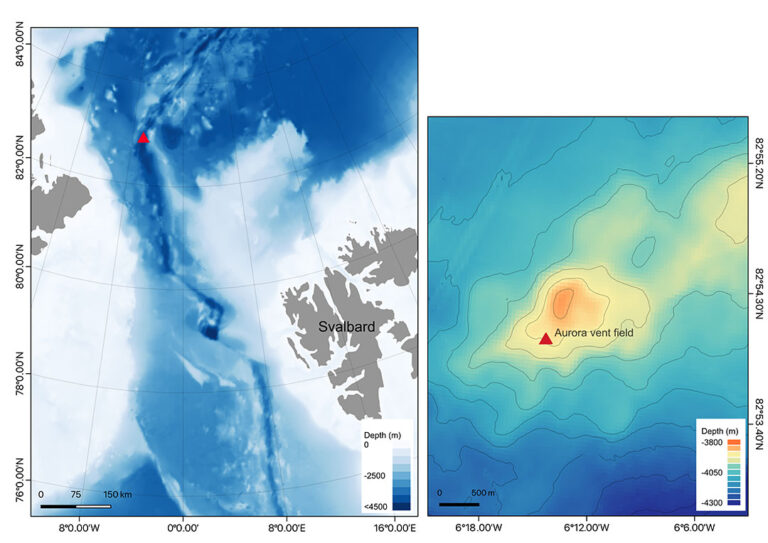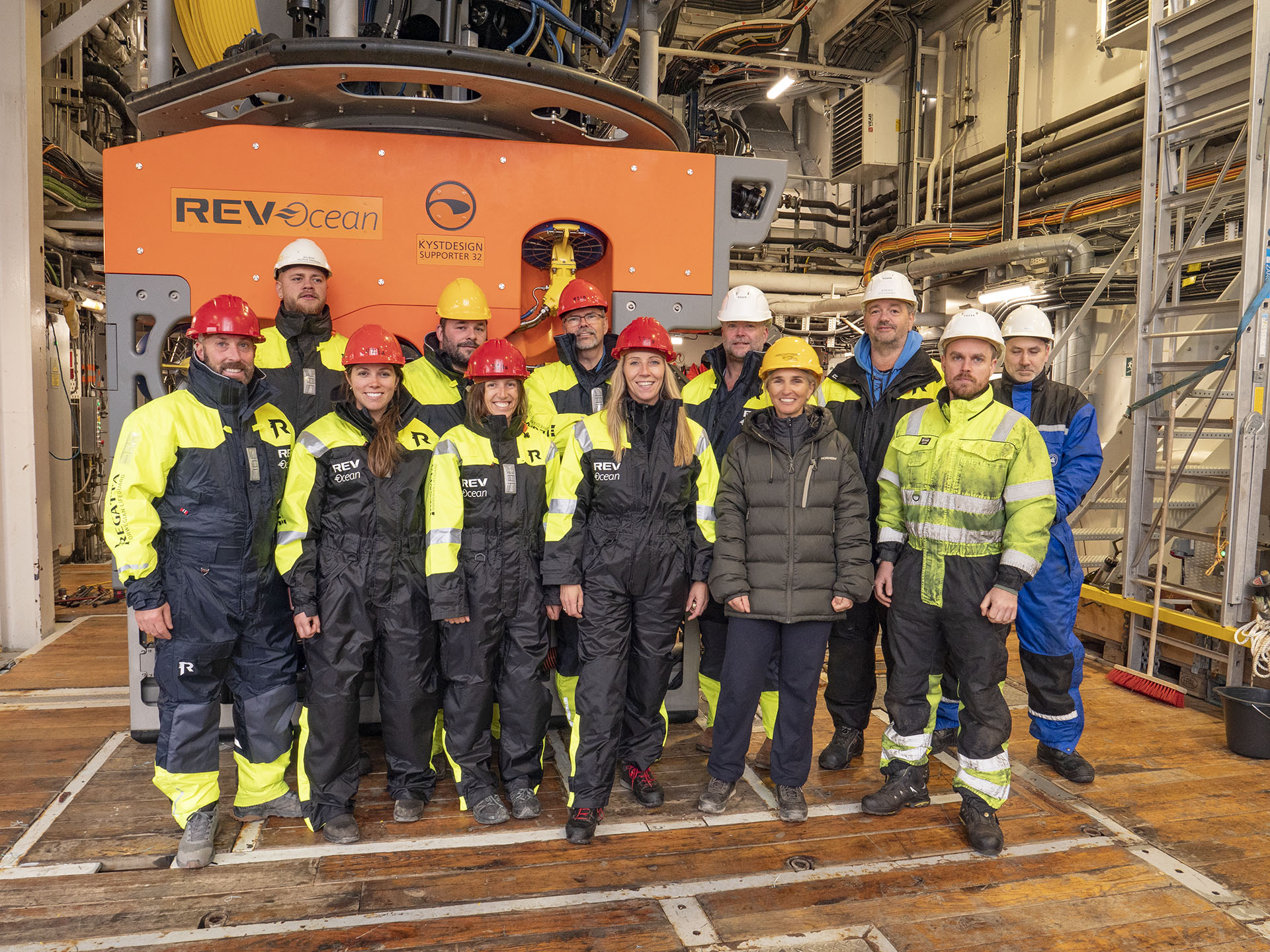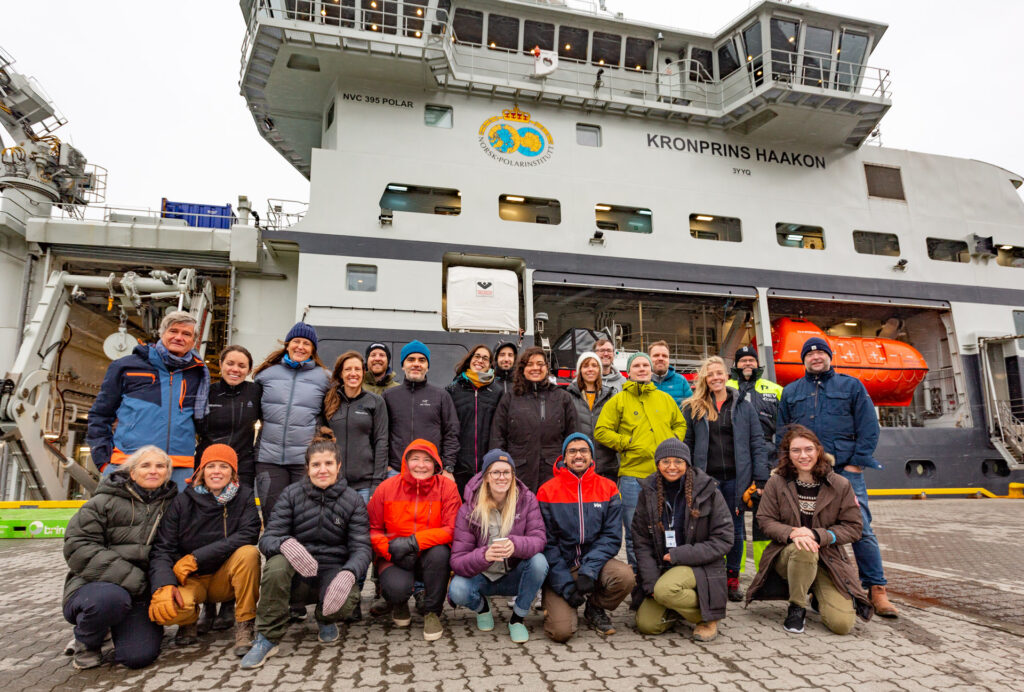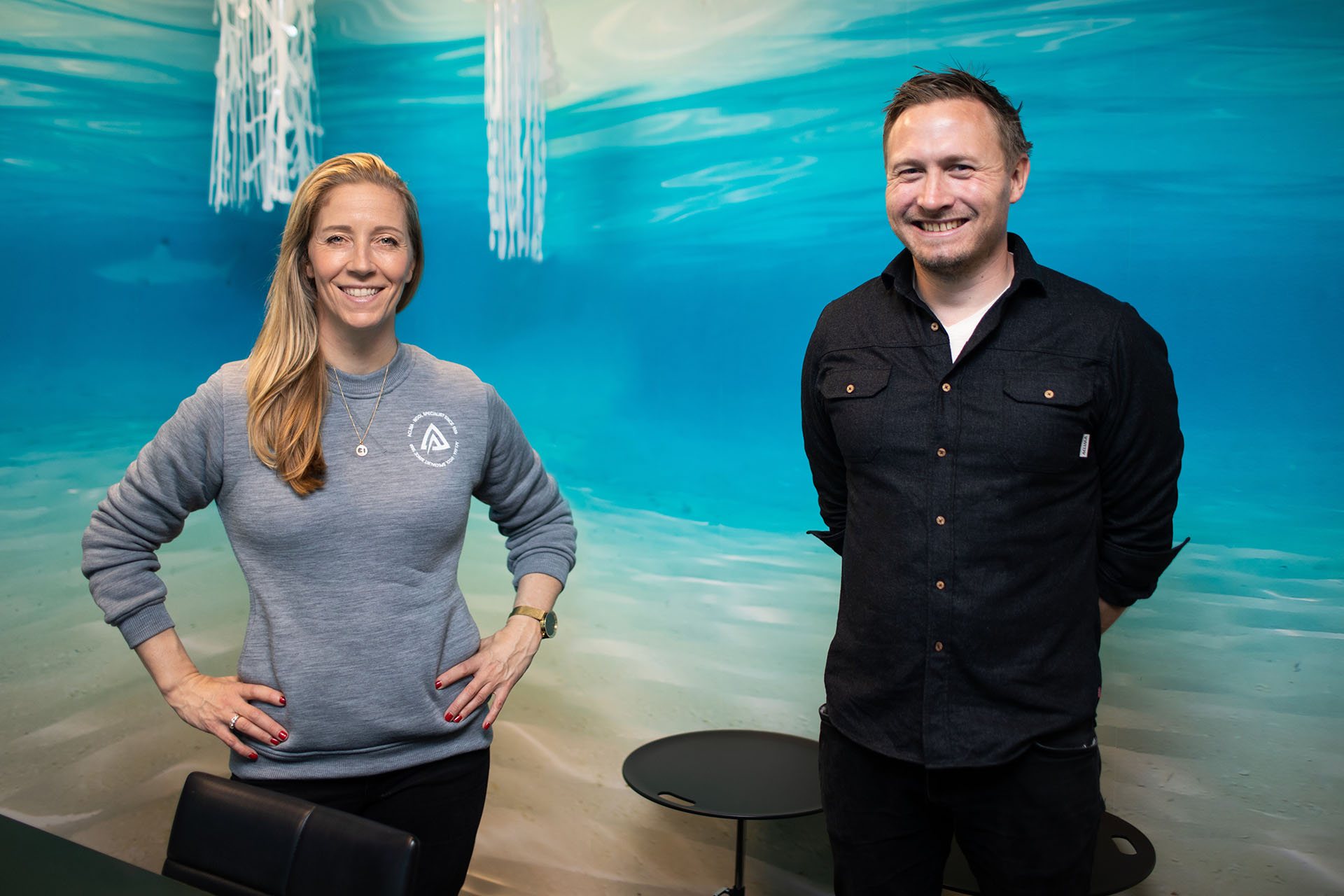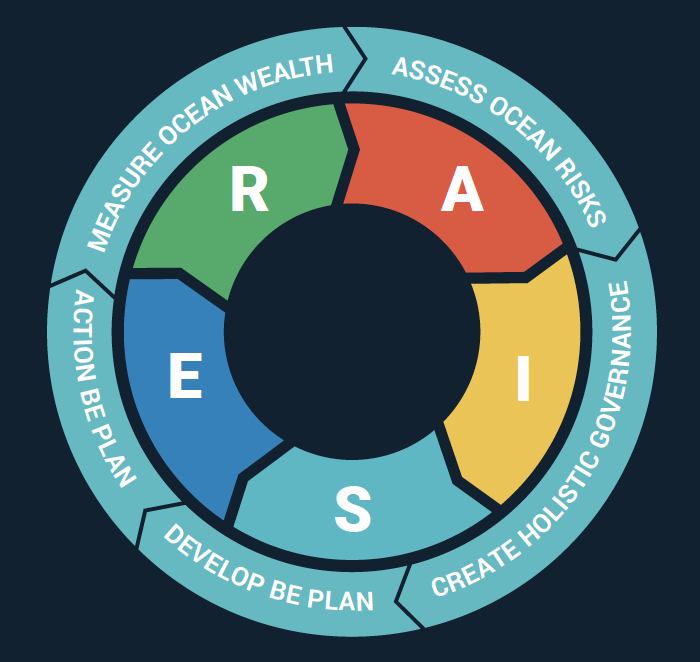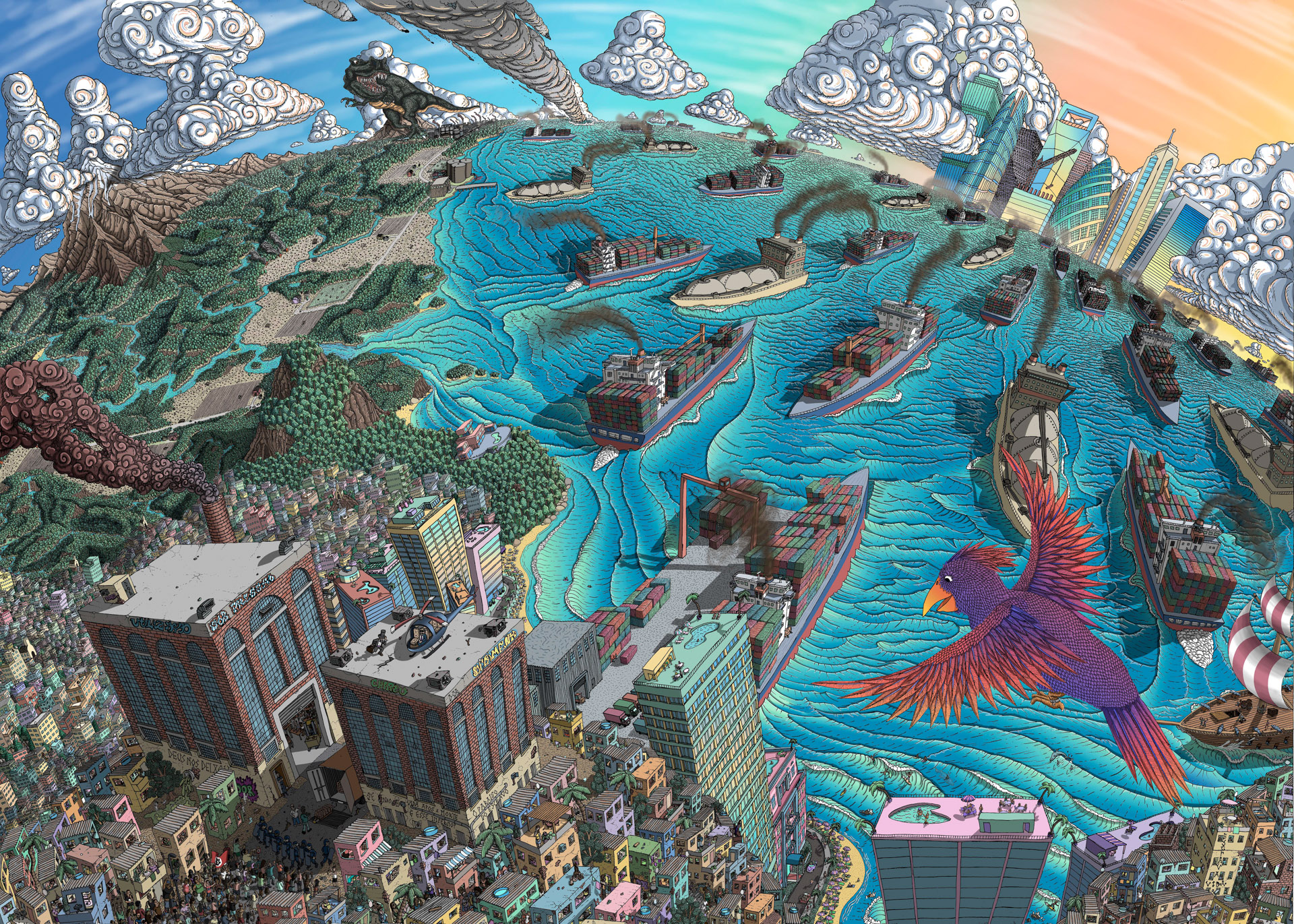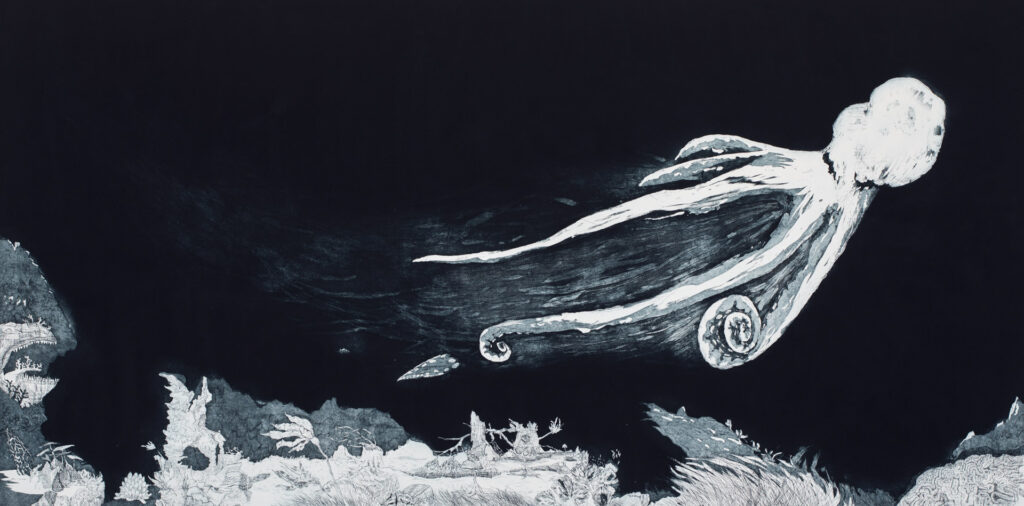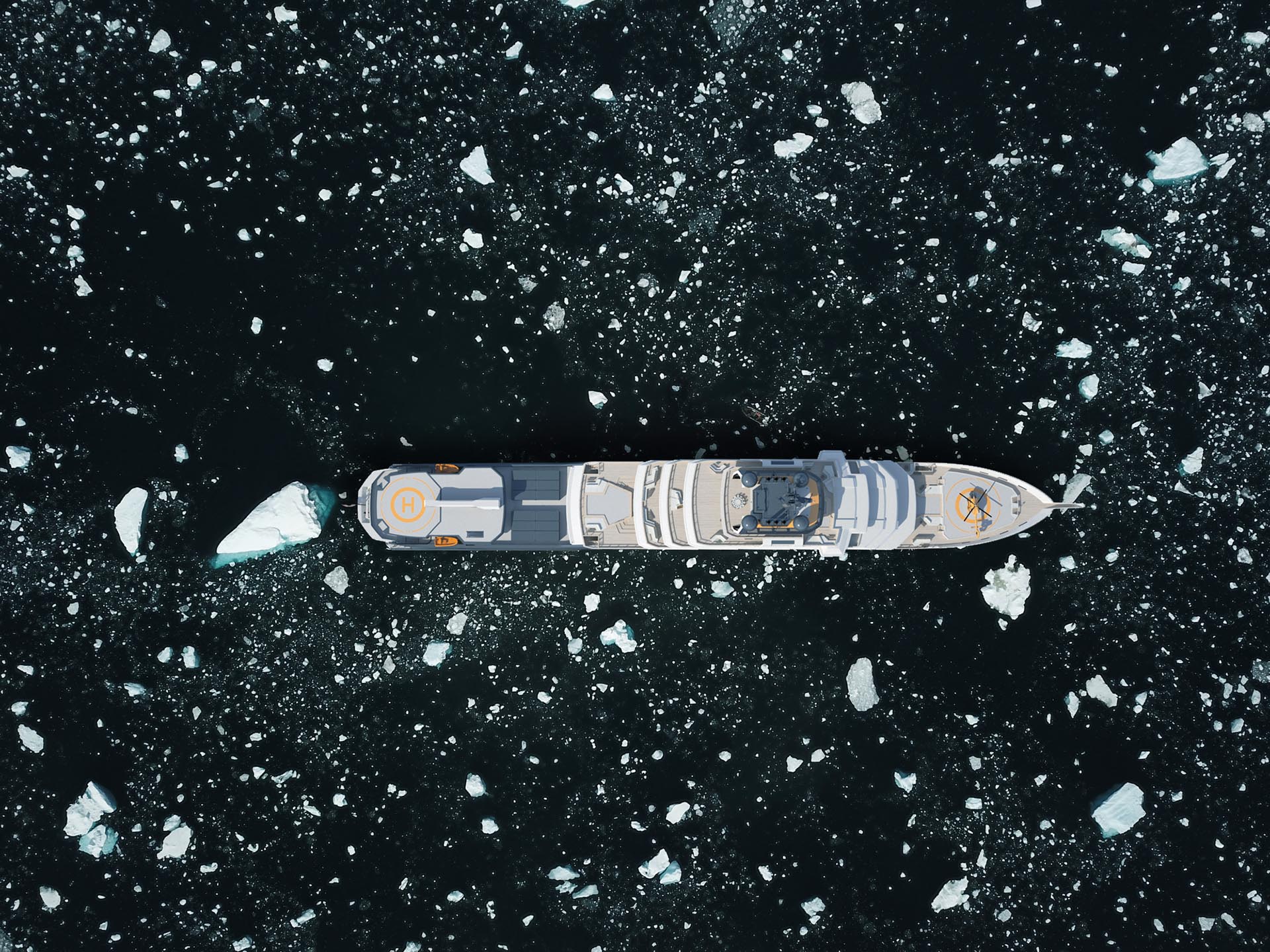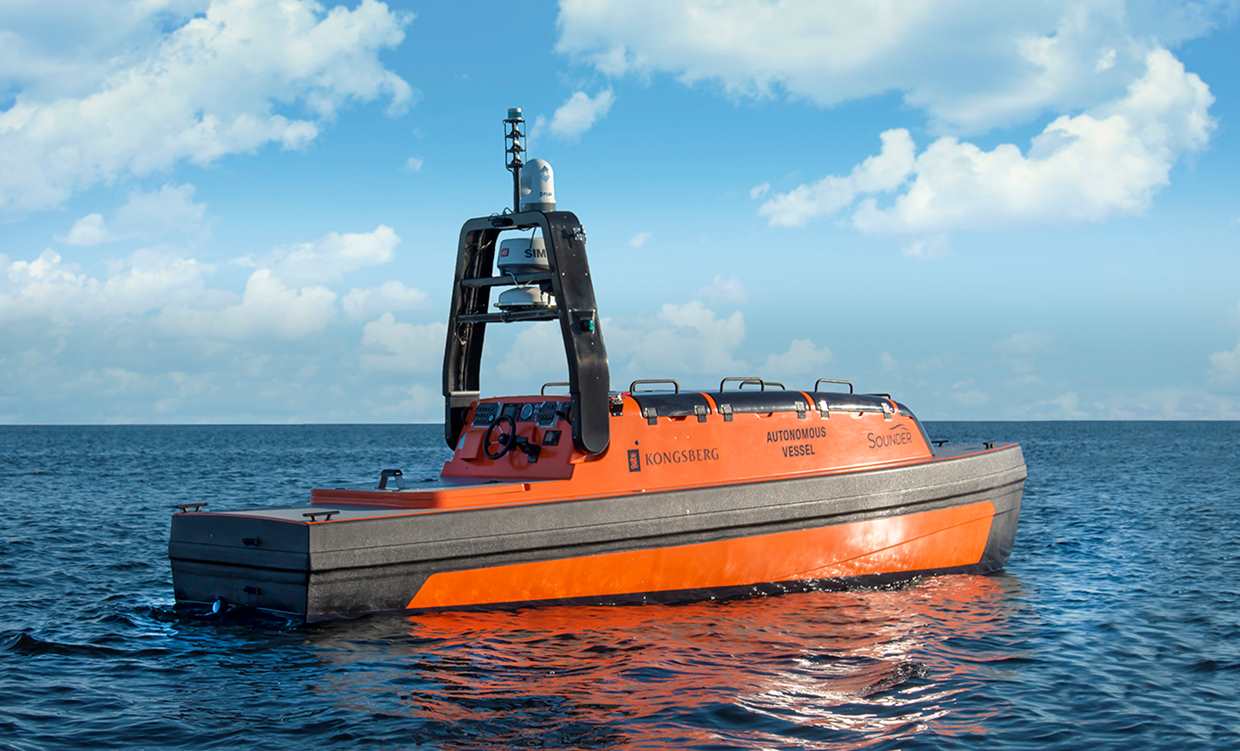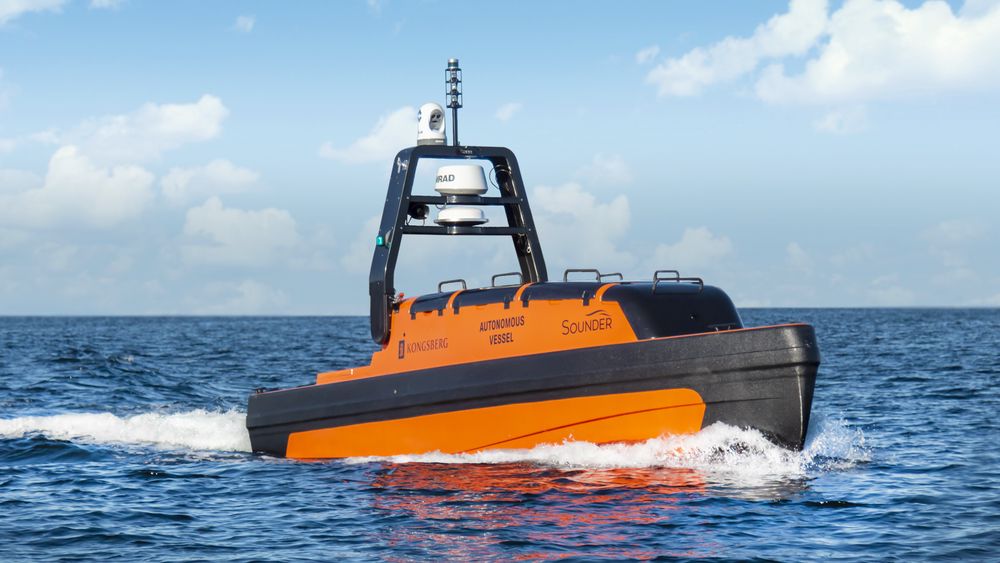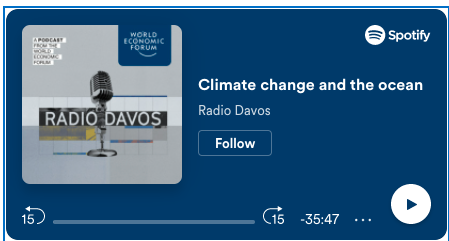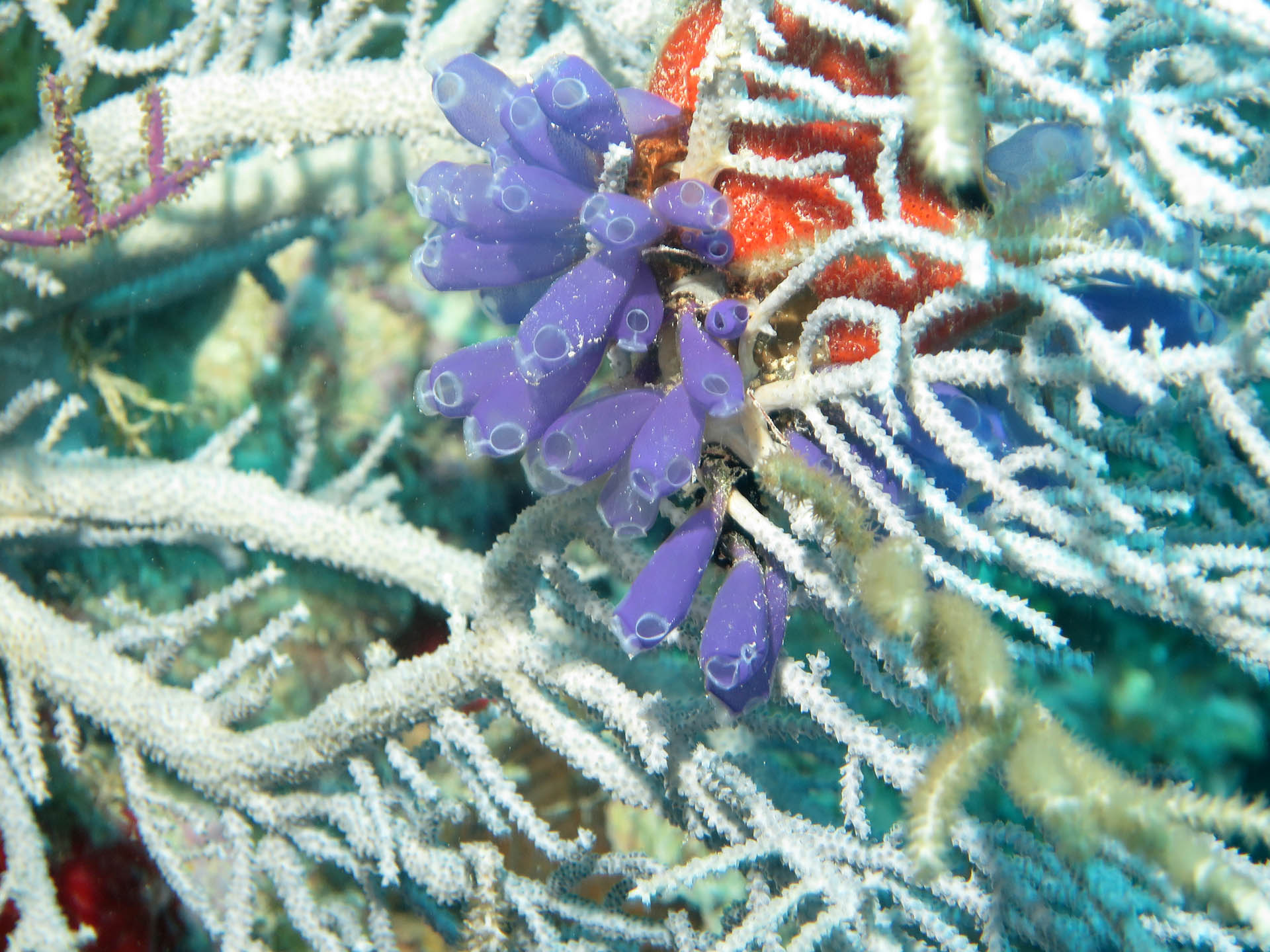REV Ocean´s ROV “Aurora” enables scientist to collect data and samples 4km under drifting Arctic Ice
REV Ocean joining high Arctic research cruise
Sept 29, 2021 Longyearbyen.
Today is a joyous day in the high Arctic as the REV Ocean team baptises Aurora, our new deep-sea remotely operated vehicle (ROV). The baptism was done aboard the Norwegian icebreaker Kronprins Haakon for Aurora’s maiden voyage, which coincidentally will be to visit the Aurora hydrothermal vent field in the Arctic Ocean.
A team of six REV Ocean specialists will join the international and multidisciplinary HACON 2021 cruise (hot vents in an ice-covered environment) with a talented group of international and multidisciplinary researchers who will re-visit the Aurora vent field, in the Gakkel Ridge, between 29 Sept and 24 Oct 2021. The cruise will sail from Longyearbyen (Svalbard) and after doing some deep-water test will head back into the ice to the Aurora vent field (82.5°N).
The Aurora ROV will be deployed through the Kronprins Haakon moonpool and is equipped with a large tether management system (TMS), which has fixed and pan/tilt cameras and lights for observing the ROV operations. Additional sensors and cameras can also be mounted to the TMS for future missions. Until now, no ROV has been able to dive successfully to the vent field, at 4000 m depth under permanent ice cover.
During the HACON cruise, the Aurora ROV will be used to sample for the first time this remote deep sea ecosystem. The geological, geochemical, physical and biological samples will allow the HACON researchers to understand the processes driving these vent systems and to assess if the Aurora vent fauna has evolved in isolation in the Arctic, or is genetically connected to the Atlantic or Pacific Ocean fauna.
The HACON teams will focus on the geochemical and physical processes that shape the Aurora biological communities and assess the role played by the Gakkel Ridge in connectivity of chemosynthesis-based ecosystems between ocean basins. The project will provide empirical robust data of a pristine system prior to expected climate-change variations and increased human activities in the Arctic region.
Aurora is a Kystdesign 6000 m rated remotely operated vehicle (ROV) and is one the most important tools for REV Ocean, placing 98% of the world’s ocean within range of ocean researchers. The ROV manipulators are equipped with delicate pincers for taking targeted samples, and the unit contains 7 high-definition cameras. The ROV has a wide range of payload options to carry utility equipment: skid front drawer with dual sampling chambers, pushcores and bladecores, slurp sampler with multi-chamber container, gas sampler, niskin bottles, geochemical and oceanographic sensors and a multibeam system for cm-scale imaging of the ocean floor.
The REV Ocean team will use the opportunity to gain real field experience and use one of our core assets, the ROV, in some of the most complicated and harsh conditions on the planet. This is one of the best learning opportunities for our science, operations, and communications teams to troubleshoot, learn and come back with a wealth of new experiences that will feed into REV Ocean programming.
HACON live route map
HACON project website
Project links and social media channels:
REV Ocean
https://www.instagram.com/rev_ocean/
https://www.facebook.com/OceanREV/
https://twitter.com/rev_ocean
https://www.linkedin.com/company/18598419/admin/
C4IR Ocean
https://www.instagram.com/c4irocean/
https://www.linkedin.com/company/c4irocean/
https://www.facebook.com/C4IROcean
https://twitter.com/c4ir_ocean
FF Kronprins Haakon
https://www.instagram.com/polarinstituttet/
https://twitter.com/norskpolar
https://www.facebook.com/NorskPolarinstitutt
Cruise is led by CAGE and NIVA
https://www.facebook.com/cageuit/
https://twitter.com/cage_coe
https://twitter.com/NIVAforskning
https://www.facebook.com/NIVAforskning/
https://www.instagram.com/nivaforskning/?hl=en
https://www.linkedin.com/company/niva/
University of Bergen
https://twitter.com/uib
https://www.facebook.com/unibergen
https://www.instagram.com/unibergen/
https://www.linkedin.com/school/university-of-bergen/
The Centre for Environmental and Marine Studies (CESAM) is a Research Unit of the University of Aveiro (UA)
https://www.facebook.com/UnivCESAM/
https://twitter.com/CESAM_Univ
https://www.instagram.com/cesam_univ/
https://www.linkedin.com/company/cesam-univ/
Ana´s Lab group – https://twitter.com/DEEPCs_UA
University of Southhampton
https://www.instagram.com/uni_southampton/
https://twitter.com/unisouthampton
https://www.facebook.com/unisouthampton
https://www.linkedin.com/school/university-of-southampton/
Memorial University
https://twitter.com/MemorialU
https://www.facebook.com/MemorialUniversity
https://www.instagram.com/memorialuniversity/
REV Ocean and Aclima to champion new sustainable clothing for ocean research
Fornebu, 02 September 2021. REV Ocean and the Norwegian wool clothing manufacturer Aclima have entered into a cooperation agreement to develop new sustainable solutions in the textile industry.
REV Ocean is focused on creating positive change for the ocean and is currently building a new state-of-the-art research vessel with global capabilities and ambitions. The companies’ sustainability programme encompasses all aspects of the vessel’s operations, including building materials, energy, waste, clothing, food, etc. Ultimately, the goal is to be as sustainable as possible, including clothing, and to incorporate innovative natural products.
The collaboration will look at how marine plastic can be used in clothing in new and innovative ways, and investigate what opportunities lie in raw materials such as seaweed and fish skin. In addition, a limited edition and special wool clothing line are being planned in collaboration with the wider REV Ocean network.
REV Ocean will often be in areas with extreme weather and harsh conditions and will depend on sustainably produced high-quality garments. This also provides completely unique opportunities for testing functionality and materials.
“We have high expectations of how we can work together to use the expertise in both companies for the benefit of the environment and the future. At Aclima, we base our business on natural fibres, and the focus on sustainability is therefore completely natural. At the same time, we want to be a driving force in development. The world-leading expertise found in REV Ocean will be incredibly important in this work.” says Aclima’s Marketing Manager, Ole Magnus Halvorsen.
Finding and implementing new and sustainable solutions requires joining forces on many different levels. Both companies see that global ocean and environmental challenges cannot be solved by individual actions alone. This cooperation will be an important driving force to showcase how companies can work together to champion new ocean solutions.
REV Ocean’s CEO Nina Jensen says: “The collaboration with Aclima is a good example of putting REV Ocean’s mission into practice. Going ‘from curiosity to understanding to solutions’ is our core goal and we are excited to see real sustainable products being made available that our team can start using, whilst developing innovative solutions at the same time, and to encourage other companies to do the same.”
“It goes without saying that we place particularly high demands on our partners related to sustainability. In addition, the conditions we often operate in mean that we are also uncompromising requesting that all equipment has a high technical quality. Therefore, Aclima was the most natural choice for us.” says Anne Slaaen, Sustainable Uniform Program Advisor for REV Ocean.
About Aclima
Aclima is a Norwegian family-owned company based in Drammen and Krøderen. Aclima has targeted quality, textile innovation and a passion for outdoor activities since 1939. The wool specialist with its production at Aclima’s own factory in Estonia focuses on high-quality merino wool products for the professional and outdoor market.
ABOUT REV Ocean
REV Ocean is a not-for-profit company created with one overarching purpose and ambition – to make our ocean healthy again. Established in Norway in 2017, REV Ocean’s mission is to enable and inspire ocean solutions and combat the negative pressures currently affecting the ocean. The science strategy is focused on dealing with plastic pollution, climate change, and the environmental impacts of unsustainable fishing.
For more information, please contact:
Ole Magnus Halvorsen, Marketing Manager Aclima AS
Tel. 909 17 869 or e-mail: ole.magnus@aclima.no
Lawrence Hislop, Communication Director, REV Ocean
Tel. 48500514 or email: lawrence.hislop@revocean.org
REV Ocean contributes to new report that shows how Blue Economy practices can RAISE aspirations around the globe
‘The Blue Economy in Practice – Raising Lives and Livelihoods’ is a new report that shines a light on over 70 global case studies where governments and other agencies are successfully contributing to Blue Economy approaches.
Launched by Blue Economy consultancy NLA International, analysis of these wide-ranging examples of practice has also led to the identification of a new step-wise process for developing a Blue Economy. That process is grouped into five phases: from mapping and measuring ocean wealth through to the implementation and monitoring of Blue Economy Plans.
REV Ocean Science Director Alex Rogers co-authored the report and said: “The balance between sustainable ecosystems and sustainable prosperity is a challenge we’ve failed to meet but this report clearly reveals that it is possible to achieve both. The solutions to a sustainable Blue Economy outlined here show that triple-win solutions for people, the economy and the environment are achievable anywhere in the ocean.”
In celebration of World Oceans Day 2021, the report also identifies five core principles to “RAISE” the quality of human and marine life and livelihoods that should be considered throughout a Blue Economy journey, so that policies and practices are Regenerative, Adaptive, Inclusive, Sustainable and Evidence-led.
Practice examples featured in the report include:
- How natural capital and ocean accounts are changing perspectives in the UK, Australia and Morocco.
- How the potential impacts of climate change are being modelled to inform transport decisions in the Caribbean.
- How new ocean data portals are maximising the value that everyone can extract from marine and maritime information.
- How Canada is engaging with diverse communities to develop its Blue Economy strategy.
- How Vietnam’s National Action Plan for management of marine plastic makes a public commitment to specific measurable targets.
- How India and Norway are collaborating on Marine Spatial Planning, the cornerstone of Blue Economy development.
- How the Port of Los Angeles is contributing to California’s Blue Economy by aiming to become a zero-emissions port.
- How schools, universities and industry bodies are launching new Blue Economy-themed education and training offers.
- How the Dutch Central Bank is including biodiversity in its core risk modelling framework.
- How local communities in Chile and the Philippines are central to Monitoring, Control and Surveillance of marine protected areas.
- How a range of actors, from governments to venture capitalists, are investing in Blue Economy innovation.
NLAI Director and report co-author Andy Hamflett said: “We are witnessing burgeoning interest in the Blue Economy globally, but coverage of developments can be quite high-level, which makes it hard for many to engage in meaningful ways. By presenting tangible examples of practice within an easily accessible headline structure, we hope to make it easier for governments, policy-makers and all stakeholders to find the successful approaches they need most.”
NLAI Associate and report co-author Belinda Bramley said: “We’re pleased to be shining the spotlight on so many examples of good practice, but equally important are the principles that determine how good policies are designed and delivered. Our analysis suggests that the best Blue Economies will be built on approaches that are regenerative of the ocean environment; adaptive to a changing climate and new knowledge; inclusive of all stakeholders, particularly those who depend most on ocean resources; sustainable environmentally, socially and economically; and evidence-led. Blue Economies that follow these principles are most likely to RAISE the quality of lives and livelihoods.”
Download ‘The Blue Economy in Practice – Raising Lives and Livelihoods’ now. The report is part of NLAI’s Blue Economy Pulse project, which aims to track, synthesise and raise awareness of new initiatives related to the Blue Economy globally. You can sign up to follow Pulse on its dedicated LinkedIn page.
REV Ocean art featured at Bomuldsfabriken Gallery in Arendal
Image: G
Artistic Approaches to One Healthy Ocean
19.06.21, Arendal, Norway – The Bomuldsfabriken art gallery in Arendal, Norway, will host an ocean-themed exhibit titled the As Far as My Eye can Sea – Expedition that will showcase 62 artists commissioned for the REV Ocean research and expedition vessel and will provide the first opportunity for the public to view the art before it is installed on the 183-meter (600 ft) ship.
There are approximately 185 artworks curated for REV Ocean, which form a core element of the vessel’s DNA, and the hope is for this to be the starting point of a long-term art programme. 30% of the artworks are commissioned exclusively for the ship and help highlight topics related to REV Ocean’s mission of creating One Healthy Ocean.
Image: Tone Bjordam
REV Ocean is a unique research and expedition vessel equipped with state-of-the-art laboratories, sonar systems, sampling, observation, mapping and communication equipment to conduct research that covers the entire marine ecosystem. Core science missions will focus on ocean challenges in three areas: Plastic pollution; climate change and ocean acidification; and overfishing and environmental impacts of fishing.
The art exhibit will run from June 19 – September 2021 in Arendal and feature young and emerging contemporary Norwegian artists who use diverse forms of expression, including painting, sculpture, mixed media and multimedia, with a common theme focused on ‘the ocean’. The works vary from figurative to abstract and intend to trigger emotions and stimulate conversations that link to REV Ocean’s goal of solving major ocean problems.
An important ethos in REV Ocean is to give opportunities to those who may struggle to get fair chances in life and to allow people to reach their full potential. In the context of the art programme this philosophy is helping raise awareness of Norwegian contemporary art and is intended to be a catalyst to push the boundaries of art, science and environmental solutions. The art collection is focused on promoting emerging artists who are based in or work in Norway and is intended to bring more attention to the work of these artists on the international stage.
The art is a vital contribution to achieve REV Ocean’s mission of going from ‘curiosity, to understanding, to solutions’. The vessel is a platform that offers a wide variety of stakeholders – researchers, innovators, decision-makers, business and civil society – to align with the goal of turning knowledge into ocean solutions. The art collection represents yet another meaningful way to help educate, inspire and motivate people to take action to help the ocean.
Image: Ragna Misvær Grønstad
We need to bring a range of different perspectives together in order to stimulate empathy for and constructive dialogue about the ocean. This art exhibit is an important part of this dialogue and a great way to foster positive action. We attempt to create strong links between art and science and inspire creativity and innovation to make the ocean healthy again. – Nina Jensen.
The artists’ perspectives on research and contemporary ocean issues are a key theme that runs through the collection, as well as a focus on interdisciplinary dialogue and collaboration. It is an exciting and thought-provoking exhibit that brings forward diverse ideas and aesthetic qualities. The hope is to stimulate curiosity, thoughts and emotions and give a unique perspective on how people can work together for ocean health.
We are grateful and enthusiastic about our collaboration with REV Ocean. The exhibition will be Bomuldsfabriken´s summer art exhibition, and we are working towards a grand opening in June. We hope that the art exhibition can inspire all minds and hearts to be more curious and get a better understanding of the challenges and possibilities that lay ahead for our ocean.’ – Tone Lyngstad Nyaas.
The Artistic Director of the REV Ocean Art Programme is Magne Furuholmen, and the Chief Curator is Åse Kamilla Spjelkavik Aslaksen. Together they have handpicked a unique collection of art that speaks directly to ocean sensitivity, is specifically designed for the vessel, and encompasses a wide variety of mediums from sound and video installations to textile, paintings, prints, photography and sculpture. In total, there are 62 artists; 32 female; 30 male; 13 with immigrant background; and 3 with Sami heritage.
“The REV Ocean collection and art programme are intended to reflect how artistic practices can offer unique and thoughtful insight to the condition of our world, and a recognition of art’s place in a dialogue on all important topics – in this case, the ever-growing concern for the state of our natural world, specifically the oceans and our wanton treatment of them. It also aims to reflect how many exciting artistic practices of today explore and collaborate closely with the scientific community.” Magne Furuholmen, artistic director REV ocean art programme.
About REV Ocean
Established in Fornebu, Norway in 2017, REV Ocean will enable a new generation of ocean solutions and raise awareness of global impacts on the marine environment. Norwegian businessman Kjell Inge Røkke launched the initiative with a clear vision to go further than anyone has before to address ocean challenges in three focal areas: Plastic pollution; climate change and ocean acidification; and overfishing and environmental impacts of fishing.
About the REV Ocean vessel
REV Ocean is a unique research and expedition vessel. The ship is equipped with state-of-the-art sampling, observation, mapping and communication equipment to conduct research that covers the entire marine ecosystem, from the coastal zone to abyssal depths, and from polar regions to the tropics. www.revocean.org
About Bomuldsfabriken Kunsthall
Bomuldsfabriken Kunsthall is one of the region’s largest exhibition venues for contemporary art. The former textile factory from 1898 is located in scenic surroundings by Langsævannet, between E18 and Arendal center. It is part of the Culture Network in Arendal municipality and receives grants from the Ministry of Culture and Aust-Agder County Municipality. www.bomuldsfabriken.no/
Status of REV Ocean
June 17, 2021 – REV Ocean was established in Fornebu, Norway, in 2017, with a critical mission to facilitate a new generation of ocean solutions and raise awareness of global impacts on the marine environment. The main platform to achieve this important mission is developing the world’s most advanced research and expedition vessel – REV Ocean. An extensive team of world-leading experts have been hired, and a broad network of science, research and innovation partners have submitted proposals to achieve our ocean saving mission.
Over the past year, the construction of the REV Ocean vessel has been beset by delays caused by the yard. We have been hoping the situation would improve, but compounding issues are causing further setbacks. We have not received a timeline for when a compliant ship will be delivered. Our own best estimate suggests a three to five year delay for when the vessel can be placed in operation. This is related to technical and weight challenges, and the ship is as of today not in accordance with the specifications in the shipbuilding contract. Delivery can first take place when the ship is able to conduct the research and expedition missions which the ship is intended for.
Due to the substantial delay from the yard, there is a right to cancel the contract. However, this right has so far not been used. The top priority for the owner is delivery of a compliant research and expedition vessel. Despite this setback, the REV Ocean ambition remains the same – One Healthy Ocean. During this time we will continue to implement our overarching mission, but as a result of the extended delay of the ship, all vessel-related activities will temporarily be put on hold. Unfortunately, this will have consequences for our entire team, but the intention is to reconstitute when the vessel is closer to completion.
Core focal areas will quickly shift to support projects related to ocean data, solutions to ocean plastic pollution, and emerging technology such as autonomous platforms for ocean observation. This work will be done together with other Aker companies and initiatives such as C4IR Ocean, Aker BioMarine, and Aker Horizons, as well as external organisations such as the Nekton Foundation. REV Ocean will use this opportunity to fill critical knowledge gaps, develop innovative solutions, and bridge science, business and policy sectors to achieve positive change. Our actions will also continue to support the UN Decade of Ocean Science (2021-2030).
The REV Ocean Board and Management team are working together with staff to find the best opportunities in this challenging interim phase, to scale up existing ocean ‘solutions’, and develop relevant skills needed for REV Ocean’s future operational phase.
REV Ocean provides scientific and technical advice to Aker BioMarine’s new Kongsberg Unmanned Surface Vehicle
Aker BioMarine has ordered a new Sounder USV (Unmanned Surface Vehicle) from Kongsberg Maritime to further reduce their carbon footprint and optimize krill harvesting in Antarctica. The USV is also equipped to collect valuable scientific data.
June 17, 2021, Oslo – As part of the agreement between Kongsberg Maritime and Aker BioMarine, the companies will co-operate to further develop the USV, together with scientific advice from REV Ocean. This will involve REV Ocean staff providing scientific and technical advice into the project and focusing on looking for novel ways to better utilize the data from the USV in large international science programs and projects.
Sustainable use of the ocean and marine resources is a key part of Aker BioMarine’s strategy. To achieve this, the company has invested heavily in technology that contributes to more sustainable fishery and fishery management. In order to collect detailed data on the krill biomass, Aker BioMarine launched an unmanned solar-powered ocean data drone (Sailbuoy) early in 2020. Now the company has made another important investment, buying a specially designed USV from Kongsberg Maritime.
Unmanned maritime systems are evolving rapidly, and Kongsberg Maritime has a history of making world-leading products for the hydrographic and subsea positioning industries. The company supplies more multibeam sonars, positioning and fishery systems to the offshore market than any other manufacturer. The new agreement with Aker BioMarine will give the biotech and krill harvesting company an even greater scientific edge for their operations in Antarctica.
“With this USV we will further reduce our fuel consumption when looking for krill. Data from the USV will help our vessels navigate more efficiently, and thereby help minimize our CO2 footprint. We chose Kongsberg Maritime because of their experience and technical expertise, and this USV represents a versatile and reliable platform to help us reach net-zero carbon emissions by 2050,” says Frank Grebstad, SVP Vessel Operations at Aker BioMarine.
“This new agreement with Aker BioMarine is very exciting. The ability to collect precise data effectively from the ocean is important to make fisheries more sustainable. Further developing and advancing this technology will be invaluable in making the job of scientists easier,” says Nina Jensen, CEO of REV Ocean.
About the Sounder USV:
- The Sounder USV is designed for optimal performance of hydroacoustic sensors and systems.
- It is built around a robust 8-meter vessel hull, developed in cooperation with Viking Norsafe A
- The USV can be remotely controlled from a shore station or mothership through Kongsberg Maritime Broadband Radio (MBR), or from further afield via satellite communications. Additionally, situation awareness sensors – such as RADAR and various camera systems – facilitate advanced mission autonomy.
- Systems from Kongsberg Maritime’s range of sensors for hydroacoustic mapping, positioning, communication, fish finding, and oceanographic research are integrated into the USV.
- The system configuration for this USV will help Aker BioMarine collect data for their fishery needs, but it can also collect data for scientific purposes.
“We´re proud to announce this contract and believe that our cooperation with Aker BioMarine has the potential to help the company substantially in their hunt to further reduce their carbon footprint,” says Atle Gran, Area Sales Manager, Marine Robotics at Kongsberg Maritime. “KONGSBERG is committed to sustainability and firmly believes that autonomous solutions such as our USVs and AUVs are key to greener maritime operations, and in helping us to learn more about the marine environment and how to interact with it in the least invasive way possible.”
For more information please contact:
Katrin Berntsen
Director Communications, AkerBiomarine
katrin.berntsen@akerbiomarine.com
Lawrence Hislop
Director Communications, REV Ocean
lawrence.hislop@revocean.org
Aker BioMarine
Aker BioMarine is a biotech innovator and Antarctic krill-harvesting company, dedicated to improving human and planetary health. Listed on Oslo Stock Exchange, the company develops krill-based ingredients for pharmaceutical, nutraceutical, aquaculture, and animal feed applications, including INVI, a highly concentrated protein isolate, and LYSOVETA, a targeted transporter of EPA and DHA from krill. Aker BioMarine’s fully transparent value chain stretches from sustainable krill harvesting in pristine Antarctic waters through its Montevideo logistics hub, Houston production plant, and to customers around the world. The company’s strong focus on sustainability inspired the launch of AION by Aker BioMarine, a circularity company dedicated to helping companies to recycle and reuse waste. Read more: www.akerbiomarine.com
REV Ocean
REV Ocean is a not-for-profit company created with one overarching purpose and ambition – to make our ocean healthy again. Established in Norway in 2017, REV Ocean’s mission is to enable and inspire ocean solutions and combat the negative pressures currently affecting the ocean. The science strategy is focused on dealing with plastic pollution, climate change, and the environmental impacts of unsustainable fishing.
WEF ocean-climate podcast episode with Nina
Nina Jensen reflects on the Virtual Ocean Dialogues, and recent climate/ocean events.
Also, read more on Climate Breakthroughs: The Road to COP26 and Beyond.
OCEAN Solutions
- Food is fashion – Peter Thomson, Friends of Ocean Action co-chair and UN Special Envoy for the Ocean
- A food revolution is under way – Sanjeev Krishnan, Chief Investment Officer and Managing Director at S2G Ventures
- Large scale ocean conservation is becoming increasingly possible – M. Sanjayan, CEO of Conservation International
- How Are We Communicating Our Science to those who need it? – Kerstin Forsberg, Founder of Planeta Oceano
- From a depleted cod stock to one that is generating 1.2 billion a year – Ine Eriksen Søreide, Norwegian Minister of Foreign Affairs
- Ocean related ecosystems like mangroves sequester more carbon than forests – Waldemar Coutts, Director for Environment and Oceans, Ministry of Foreign Affairs, Chile
- Marine protection is a “magic cure” – Rt. Hon Zac Goldsmith, Minister for Pacific and the Environment, DEFRA and FCDO, United Kingdom
Alex Rogers Provides Commentary on new UN Biodiversity and Climate Change Report
Photo: Alex Rogers
Prof Alex Rogers participated in a Press Briefing organised by Science Media Centre .
Here is the expert panel’s reaction to the recent IPBES-IPCC workshop report on biodiversity and climate change.
A related article was printed in The Guardian
In addition, Alex Rogers has provided the following input to the workshop:
There are two global crises facing humanity at present: the climate crisis and the biodiversity crisis. I think it is fair to say that most people are aware of climate disruption but not so aware of biodiversity loss and are probably even less aware of the connections between the two.
This workshop report is a first collaboration between the Intergovernmental Science-Policy Platform on Biodiversity and Ecosystem Services (IPBES) and the Intergovernmental Panel on Climate Change (IPCC). The workshop was co-sponsored by these two international panels, but it is important to emphasise that the workshop report has not been subject to IPBES or IPCC review.
The report has been put together by a selection of the world’s experts on the interaction between climate change and biodiversity and has been subject to peer review.
I’m a marine ecologist who has been working on marine biodiversity for the last 30 years. It is very disturbing to see that coastal ecosystems have lost on average 30-50% of their cover.
- Seagrass meadows 10% per decade loss 1970-2000
- Mangrove forests lost 40% cover, saltmarshes an estimated 60%.
- Coral reefs have lost half their cover of corals since 1870.
- Since 1970 the abundance of oceanic sharks and rays has declined by 71% and three quarters of these species are now threatened with extinction.
The causes of this biodiversity loss in the ocean vary. They include overfishing and the destructive effects of fishing, coastal development (in China more than 60% of the coastline is artificial), pollution, invasive species and increasingly the direct effects of climate disruption (e.g. mass bleaching on coral reefs). Even where climate is not a direct driver of loss of marine ecosystems it interacts with other causes of species loss making them worse.
When we lose diversity we lose the critical contributions of nature to people. This may be through obvious services such as provision of food via fisheries but nature provides other services to humankind. For example, the global value of coral reef protection of coastlines from damage arising from extreme storm events has been estimated at $4 billion annually.
This report looks at how we can develop solutions, particularly nature-based solutions that address both the climate and biodiversity crises, but which also benefit people. It also examines how, if we don’t take a holistic view in tackling these problems it is quite possible to come up with solutions to climate change which actually harm biodiversity and people. An example might be planting a forest which comprises a single or a few species of trees which may not even be native species which stores carbon but does not provide habitat for many other species of animals and plants.
Finally, I’d like to acknowledge the wonderful contribution Bob Scholes, University of Witwatersrand, made to the conception and execution of this project and to his contribution to our understand of the interactions between ecosystems, the climate and human society. He was a colossus of global ecology and it was very sad that he passed away during the final preparation of this report.
